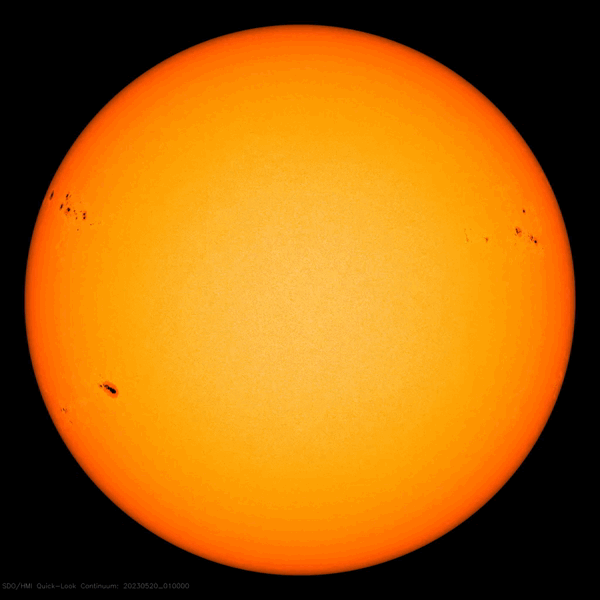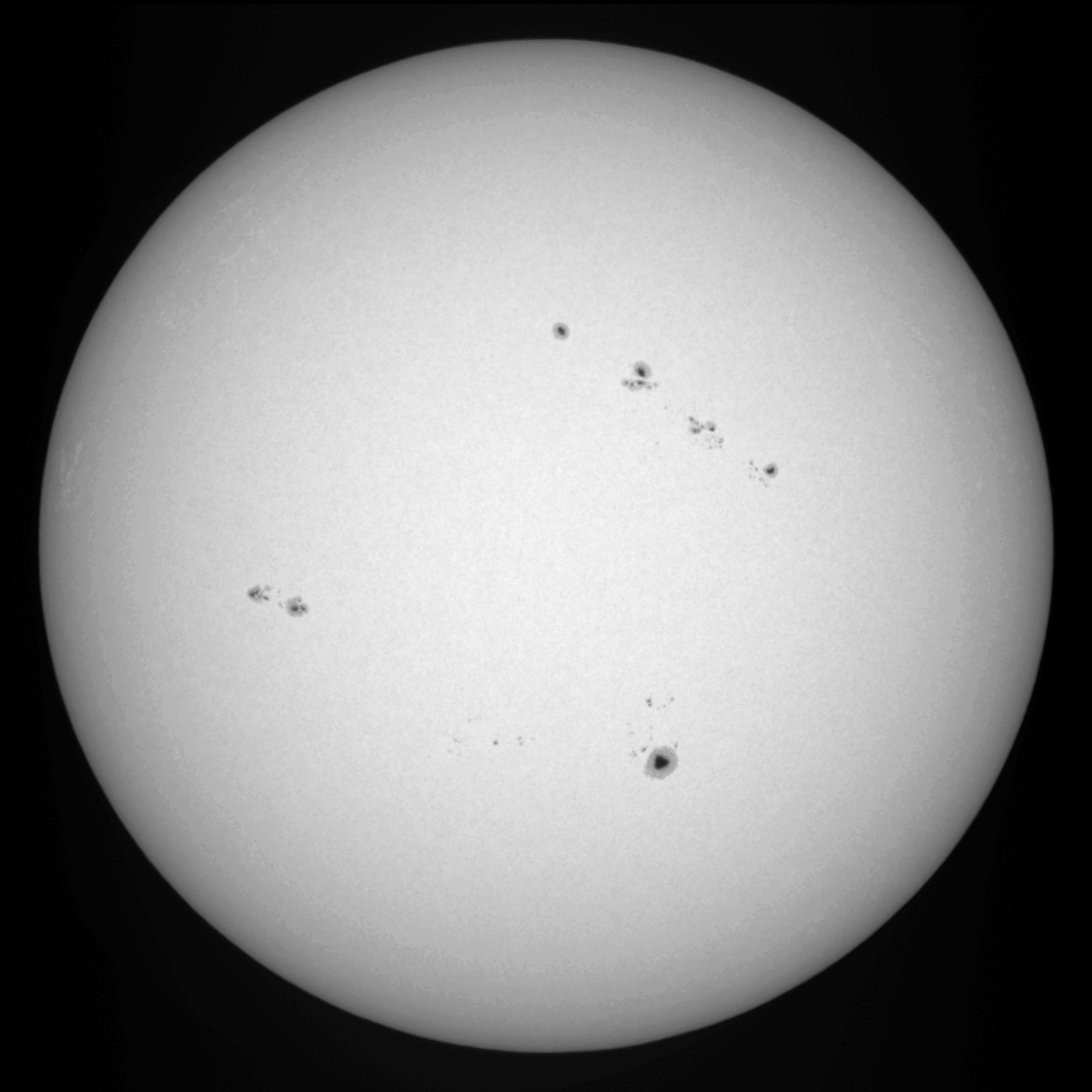When observing the Sun and its active regions, we usually think of extreme ultraviolet imagers on board satellites such as PROBA2 or SDO, as well as white light or H-alpha telescopes on the ground such as the USET solar telescopes of the Royal Observatory in Brussels, Belgium. In short: telescopes are needed, the bigger, the better. So it is always a surprize when one learns that sunspots can also be seen without a visual aid, provided of course adequate protection of our delicate eyes such as by using solar eclipse glasses. The human eye has a resolution between about 0.7 and 1 arc minutes, which corresponds to the size of a sunspot between about 250 and 450 MH. MH means millionths of a solar hemisphere, with 167 MH corresponding to the total surface area of the Earth. This means that e.g. 300 MH concerns already quite a big sunspot, and there aren't that many during a solar cycle. According to McIntosh (1990), only 8% of all unipolar and bipolar sunspot groups contain a large sunspot (north-south diameter larger than 2.5 degrees, i.e. an area larger than 250 MH) at some point during their transit.
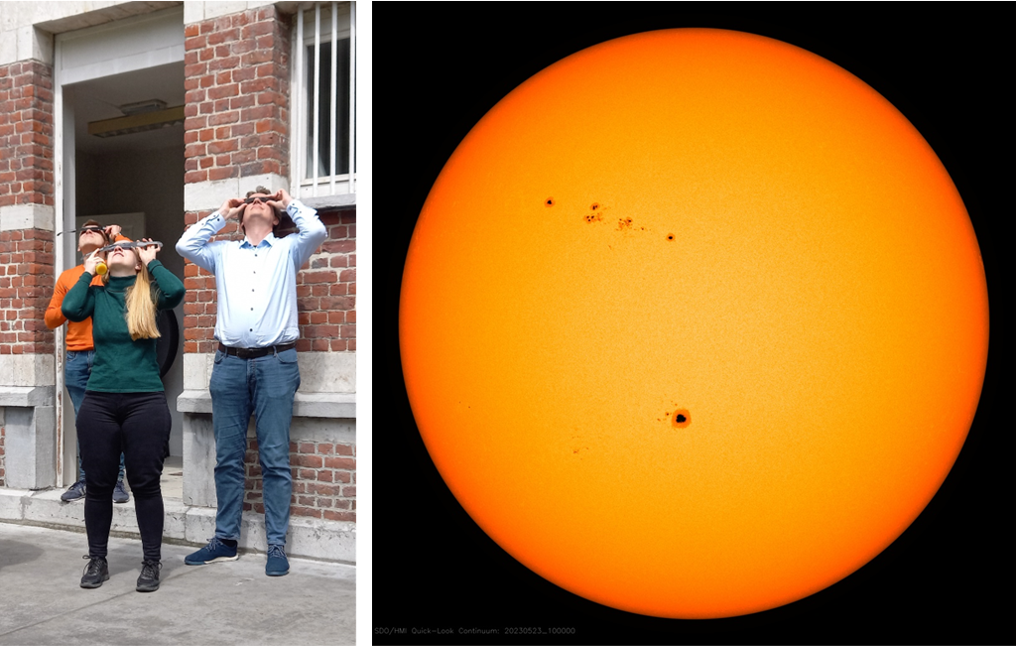
Nonetheless, last week saw 2 relatively large sunspot groups transiting the solar disk, which were both located in the southern solar hemisphere. The first one was NOAA 3310, which was basically a nice circular sunspot with some smaller satellite spots nearby. Its area was stable and varied mostly between 300 and 360 MH during the 19-25 May period (NOAA reports). Note that the NOAA reported sunspot areas are usually about 40% lower than the true values (see the Solar Cycle Science webpage). The author saw the sunspot with the naked eye from 21 to 25 May, and also USET solar observers as well as participants from the SWIC (STCE's Space Weather Introductory Course) were able to see the "tiny dot" using eclipse glasses on 23 and 24 May, as shown in the picture above. They did comment that it was on the limit, which is no surprize in view of its size and the fact that different observers have a different eye resolution.
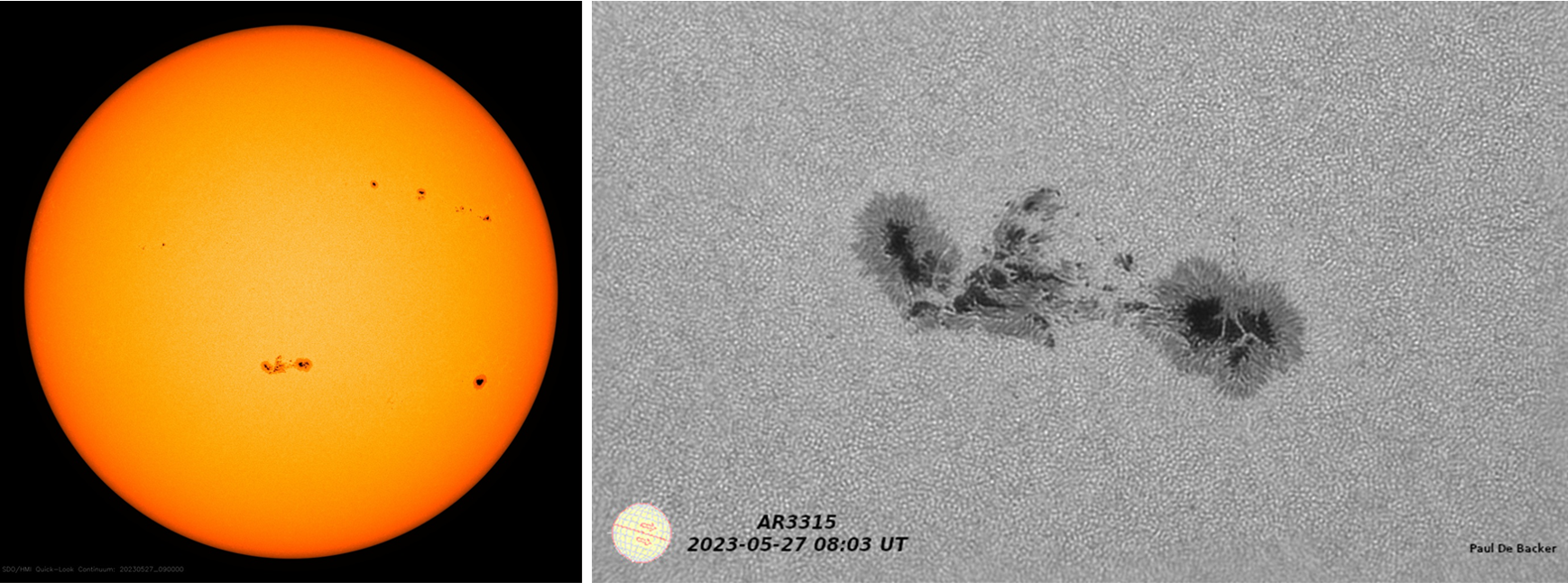
Then, from 23 May onwards, a sunspot group started to develop in the southeastern solar quadrant. NOAA 3315 became a compact sunspot group consisting of 2 big main sunspots. This can be seen in the imagery above, with next to the white light image taken by SDO/HMI on 27 May, a captivating, detailed picture of the sunspot group taken by Paul De Backer around the same time. Paul regularly contributes his amazing pictures to the Belgian Solar Section. The group reached an area of 800 MH on 28 May, and was visible with the naked eye on 27 and 28 May (no reports yet from the 29th). In fact, with the naked eye, the group seemed somewhat "smeared" which is logical because of the 2 closely spaced main spots give it a more rectangular shape than NOAA 3310. Ancient Asian observations have described naked eye sunspot groups as plumes, peaches, eggs, coins, pears,... indicating that sunspot groups on occasion were so large that certain shapes could be distinguished with the naked eye (See e.g. Vaquero and Vazquez, 2009).
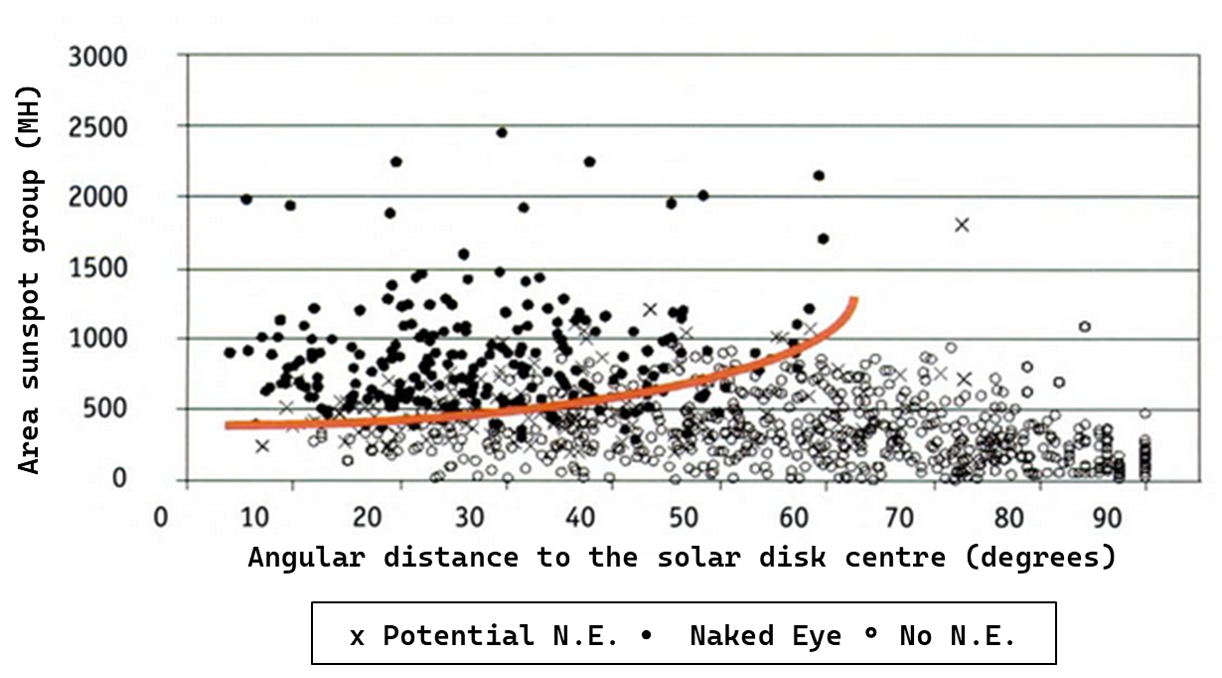
The diagram above was compiled by the author several years ago. It shows whether or not a sunspot group is visible with the naked eye (resp. the black and open dots) as a function of its area (vertical axis) and its angular distance to the solar disk's centre (horizontal axis). The data cover about 1000 naked eye observations done by solar observers from the Belgian Solar Section and the British Astronomical Association between May 1996 and December 2001. The crosses ("x") indicate a potentially naked eye sunspot, i.e. an isolated report of naked eye visibility, which usually means an observer with exceptionally good eye view. The red curve provides an idea of the lower limit of sunspot's size and location for naked eye visibility: a minimum sunspot area of around 300-350 MH near disk centre and a maximum angular distance of about 60 degrees for the largest sunspots - that's very close to the solar limb! A transition zone from "naked eye" to "not naked eye" visibility is also apparent in the diagram. This is in large part because the area of the sunspot group as a whole is taken. NOAA 3310 was basically a single sunspot of about 350 MH, but there are plenty of sunspot groups that consist of e.g. 2 well-spaced main spots of 150 MH and a few other smaller spots, also summing up to 350 MH. For a similar angular distance from the solar disk centre as NOAA 3310, the latter sunspot groups will not be visible with the naked eye. Another contributing factor is how much of the sunspot area consists of penumbra (the greyish zone around the dark core sunspot), as it contrasts less with the solar disk, and thus reduces the visibility with the naked eye.
The clips underneath are composed from SDO/HMI (20-28 May) and USET (25-27 May) images.
